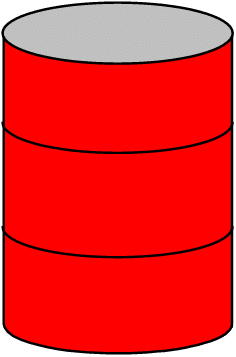Many of the gases, liquids, and powders utilized in pharmaceutical product formulation are extremely flammable, explosive, reactive, and/or poisonous. So Fire Safety Practices must be followed to ensure the overall safety of pharmaceuticals. Furthermore, many of the processes used in pharmaceutical plants – from delivery through reactor processing to filtration, drying, milling /micronizing, combining, and packing – have the potential to create flammable/explosive atmospheres. As a result, pharmaceutical facilities must have a thorough understanding of the deflagration risk presented by the materials and equipment used in their procedures.
Fire Components:
- Fuel
- Heat
- Oxygen
Source of Ignition (FUEL)
Organic materials (wood, coal, paper) Flammable liquids (paints, thinners, solvents), and Flammable gases (butane, propane).
Source of Ignition (HEAT)
- Electrical Smoking
- Hot surfaces
- Chemical relations
- Static sparks Lightning
Classification Of Fires
A. Ordinary combustibles – wood, paper
Extinguish using: water.
B. Flammable liquids – oil, grease
Extinguish using: foam.
C. Liquid fuel under pressure – propane, butane
Extinguish by: cooling and isolating the supply.
D. Electrical equipment – switchgear, motors
Extinguish by: isolating the supply, and allow to cool.
Extinguisher Methods
- Cooling or quenching.
- Removal of fuel.
- Smothering or blanketing.
Fire Safety Practices Procedure on Site
- Hot Work – controlled by a permit.
- Welding/Fabrication Work – in a purpose-built location.
- The tidiness of Work Areas – removal of waste.
- Electrical Heaters – must be secured and have free space around them.
- Flammable Liquids – containers and storage are important.
Storage of Flammable Liquids

- A flammable liquid is one that has a flashpoint below 32oC.
- All flammable liquids shall be stored in approved containers and never stored in an open container to ensure Fire Safety Practices.
- Flammable liquid containers must be stored in suitable cabinets.
- Both containers and cabinets for flammable liquids must be clearly identified that they contain flammables.
Related: SOP FOR OPERATION OF FIRE EXTINGUISHERS
Compressed Gas Cylinder Storage
Following Storage conditions must be followed to ensure Fire Safety Practices:
- Storage areas for compressed gas cylinders shall be situated in an area that is safe from vehicles and heat sources.
- Fuel gas cylinders shall be separated from oxygen cylinders.
- Valve caps should be in place during storage and transport.
- Empty cylinders should be separate from full cylinders
- All storage areas should be labeled
- All cylinders should be stored upright
- Retaining chains or straps should be used to prevent gas bottles from falling out of storage areas
List of Fire protection equipment in Pharmaceuticals.
- Fire Alarm Systems
- Fire Detection Systems
- Public Address System
- Dry Chem Fire Suppression
- Foam Fire Suppression
- ADW Linear Heat Detection System
- Water Mist Fire Suppression System
- Portable Fire Extinguishers
- Clean Agent Suppression System
Smoke detectors: Every industry should have functioning smoke alarms. industry fire sprinklers can help save lives in the event of a fire.
For best Fire Safety Practices Extinguishers are used to put out fires. Fire extinguishers are one part of a fire response plan, but safe evacuation is the most important part. Carbon monoxide detectors Carbon Monoxide (CO), also known as the “invisible killer,” should be avoided.

Naresh Bhakar is the Founder and Author at Pharmaguddu.com, bringing his extensive expertise in the field of pharmaceuticals to readers worldwide. He has experience in Pharma manufacturing and has worked with top Pharmaceuticals. He has rich knowledge and provides valuable insights and data through his articles and content on Pharmaguddu.com. For further inquiries or collaborations, please don’t hesitate to reach out via email at [email protected].
